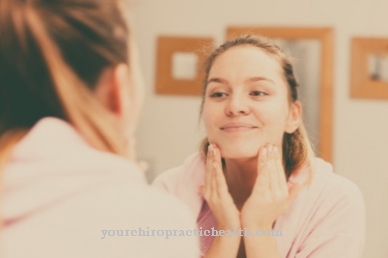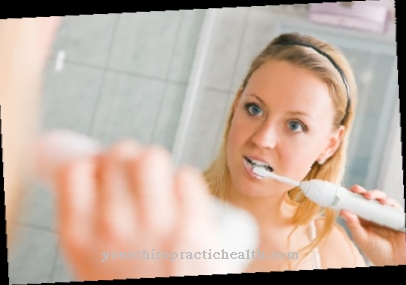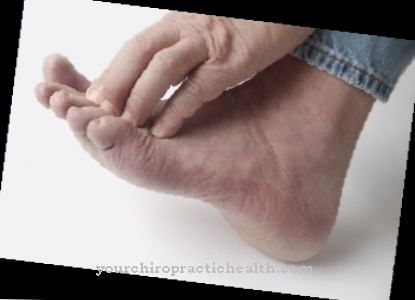Persistent problems falling asleep or staying asleep during night sleep, intensive snoring combined with temporary respiratory failure can pose serious health risks.
Due to the inadequate nightly recovery, there are often severe impairments caused by daytime sleepiness. In specialized medical facilities like one sleep-laboratory a diagnosis of the possible causes and effects can be made using complex measurement technology.
What is the sleep laboratory?

In a sleep laboratory, electronic measuring devices are used to document specific body functions such as breathing, heart rhythm and body movements during the entire night's sleep. For this purpose, electrodes are attached to many parts of the body.
These provide extensive data for storage in the PC as a basis for a specialist assessment. In addition, physical reactions during night sleep, such as leg movements, are recorded by video surveillance. The images from the video surveillance and the signals of the diverted body currents converge in a surveillance and registration room. There they are monitored by a doctor and a sleep laboratory technician during the entire measurement.
The patient can contact the caregiver at any time. The recorded measurement data provide information about the different phases of night sleep in further diagnostics. Sleep and wake times, the intensity and quality of these phases play an important role in assessing the duration and quality of night sleep. The times of so-called breathing pauses and the oxygen content still present are also recorded. The measured values should provide clues as to whether organic diseases or other peculiarities are the cause of the sleep deficits. This is intended to show therapeutic possibilities.
Function, effect & goals
Approximately one in ten adults complains of sensitive disturbances in their sleep and does not feel sufficiently rested after sleep. Such chronic sleep disorders can be examined in more detail in the more than 300 sleep laboratories nationwide. In these specialized facilities, patients are referred who suffer from these serious impairments for various reasons. According to the guideline of the German Society for Sleep Research and Sleep Medicine, these include:
- The well-founded suspicion of an organically caused sleep disorder such as sleep apnea syndrome and epilepsy or restless legs syndrome (RLS)
- Chronic sleep disorders in which, despite conventional therapy, there is no improvement over a period of more than six months
- Serious sleep disorders, which have a significant impact on performance and well-being during the day
- Unusual and unexplained behavior during night sleep such as sleepwalking, grinding teeth, abnormal movements or states of confusion
- Disturbances of the natural sleep-wake rhythm, for example through shift work, noise immissions
- Permanent personal distress and exhaustion
As part of a preliminary discussion with the patient, the details of the impairment of night sleep and the abnormalities at the time of day are asked. In addition, other important data such as existing diseases, use of medication or known hereditary factors as possible causes or influencing factors for the existing sleep problems are requested.
Depending on the symptoms and the scope of the examination, the patients spend two to four nights in the sleep laboratory for an examination. This is intended to clarify the sleep disorder as well as triggering factors and treatment options. After the examination procedure has been explained to the patient, the necessary wiring of the patient is carried out by attaching sensors and measuring devices to the body:
- Electrodes attached to the head are supposed to record brain waves, eye movements and movements of the chin muscles.
- A sensor attached to the chest is used to register changes in body position.
- The electrodes attached to the chest record the ECG (electrocardiogram).
- To measure the movements triggered by breathing, belts with sensors are attached to the abdomen and chest.
- A respiratory flow sensor is attached between the mouth and nose.
- Snoring noises are recorded by microphones.
- A sensor on the index finger or on the earlobe is supposed to measure the oxygen saturation in the blood.
- Movements of the leg muscles are recorded by two electrodes on each of the lower legs.
In addition, an infrared video camera is used for constant patient monitoring. The evaluation of all measurements leads to the creation of a sleep profile in which the course of the respective sleep cycles is shown in an informative manner. To investigate possible daytime sleepiness, a test procedure on the driving simulator can help on the next day. This is to determine the patient's ability to concentrate and react. Depending on the result of all evaluations, therapeutic measures such as wearing a mask at night can be carried out.
You can find your medication here
➔ Medication for sleep disordersRisks, side effects & dangers
During the stay in the sleep laboratory, an unfamiliar sleeping environment is presented to the patient. Due to the many straps and cabling by means of sensors attached to the body, the patient has to accept a restriction of his otherwise accustomed freedom of movement when lying down.
In addition, he must fall asleep knowing that he is being watched. There are no standardized patient reactions to this. According to the surveys, some of the patients sleep worse than at home, especially on the first night. For other patients, however, the unfamiliar sleep situation does not have a disruptive effect. In addition, no risks or health impairments are known from an examination in the sleep laboratory. There is an urgent need for therapeutic action, especially when daytime sleepiness is determined.
Particularly in connection with driving a motor vehicle or working on technical machines while working, there is a risk of considerable danger. In quite a few cases, microsleep at the wheel continues to be the cause of serious or even fatal traffic accidents. Pedestrians who are significantly affected by daytime sleepiness can also be the cause of the accident.
Necessary treatment measures, such as wearing a mask at night to improve the quality of sleep, can therefore be implemented without delay. To optimize the measurement results in the sleep laboratory, it is advisable if the patient refrains from caffeinated drinks during the day before the first nightly examination. In addition, the diet on that day should not be particularly stressful for night sleep.
The reasons for severely disturbed sleep over a long period of time can be diverse and cause considerable health effects. Therefore, the possibilities of a more detailed examination with the special methods of a sleep laboratory should definitely be used.













.jpg)

.jpg)
.jpg)











.jpg)